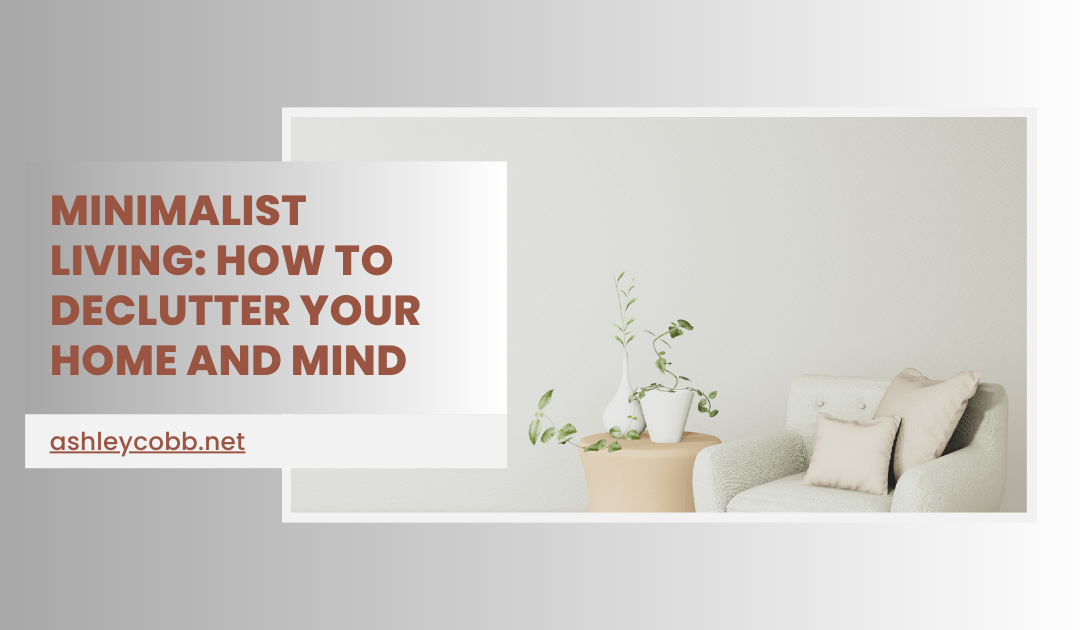Minimalist living is more than just a design aesthetic; it is a lifestyle that prioritizes simplicity, clarity, and intentionality. In a world filled with constant distractions and material excess, adopting a minimalist approach can bring a sense of peace and order. Decluttering both physical and mental spaces allows individuals to focus on what truly matters, reducing stress and increasing overall well-being.
The first step to minimalist living is decluttering the home. Many people accumulate items over time that serve no real purpose, taking up space and creating unnecessary chaos. The process of decluttering starts with evaluating possessions and asking whether each item is truly needed or adds value to daily life. One effective method is the “one-year rule,” which suggests that if something has not been used in the past year, it is likely not essential. Sorting items into categories—keep, donate, or discard—helps in making mindful decisions about what stays and what goes.
Organizing the living space with minimalism in mind creates a more functional and peaceful environment. A clutter-free home fosters a sense of calm and allows for better focus. Choosing furniture and decor that serve multiple purposes can maximize space while keeping things simple. Instead of filling rooms with excessive decorations, incorporating a few meaningful items creates a balanced and inviting atmosphere. The goal is to ensure that everything in the home serves a purpose or brings joy, eliminating unnecessary distractions.
Beyond physical clutter, minimalism also applies to mental well-being. The constant bombardment of information, responsibilities, and digital noise can overwhelm the mind. Practicing mindfulness and setting clear priorities can help in filtering out what is unnecessary. One effective way to declutter the mind is through journaling or meditation. Writing down thoughts and goals helps in organizing ideas and gaining clarity on what truly matters. Meditation, even for just a few minutes a day, can help in reducing mental clutter and fostering inner peace.
Minimalist living also extends to daily habits and routines. Simplifying daily decisions, such as meal planning, wardrobe choices, and work schedules, can free up mental energy for more important tasks. A capsule wardrobe, for example, reduces decision fatigue by focusing on a few versatile and high-quality clothing pieces instead of an overflowing closet of options. Planning meals in advance reduces the stress of daily food preparation while ensuring a healthy and balanced diet. Small changes in routines can lead to significant improvements in productivity and peace of mind.
Financial minimalism is another aspect of this lifestyle that brings clarity and freedom. Many people find themselves trapped in cycles of consumerism, purchasing items they do not need or accumulating debt. By embracing a minimalist approach to spending, individuals can focus on what truly adds value to their lives rather than chasing material possessions. Budgeting with intention, cutting unnecessary expenses, and prioritizing experiences over things can lead to financial stability and long-term happiness.
The benefits of minimalist living go beyond personal spaces and habits. Environmental sustainability is a natural outcome of consuming less. By being mindful of purchases and reducing waste, individuals contribute to a healthier planet. Minimalism encourages quality over quantity, which means investing in durable, ethically produced items rather than cheap, disposable goods. This shift in mindset supports sustainable practices that benefit both individuals and the environment.
Relationships also improve when adopting a minimalist mindset. With fewer distractions, there is more time to focus on meaningful connections with family and friends. Reducing commitments that do not align with personal values allows for deeper, more intentional relationships. The practice of digital minimalism—limiting screen time and social media consumption—enhances in-person interactions and helps in fostering stronger bonds with loved ones.
Minimalist living is not about deprivation but about making room for what truly brings happiness and fulfillment. It is about creating an environment, both physically and mentally, that supports well-being and peace. By decluttering the home, simplifying daily routines, and focusing on intentional living, individuals can experience a profound shift toward a more balanced and meaningful life.

